Can I Use Test Patern From Youtube To Calibrate Projector
How to fix your projector for the perfect picture
Get the all-time viewing feel from your beamer
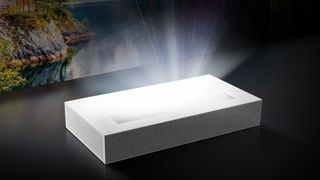
(Image: © LG)
When information technology comes to creating a home cinema arrangement, the picture quality is paramount. That means if yous have one of the best projectors you'll demand to spend some fourth dimension making certain the picture is the best it can be – though you'll be glad to hear that it doesn't really need to take upward too much of your time.
Calibrating dissimilarity, brightness, colour and sharpness is not nigh people's idea of a good night in – or a good night out, if you've opted for one of the best outdoor projectors. Only visit whatsoever picture menu during a pic and you're spring to get a avalanche of groans – but if you've got a home cinema projector, getting the right settings to adjust your home, and your personal tastes, is hugely rewarding.
Wondering how you can do that? Here'due south how to quickly ready a projector for the ultimate picture performance – whether you lot're streaming over Disney Plus or watching on your Ultra HD Blu-ray player.
The ten-minute calibration
The goal here is simple: natural-looking images in ten minutes.
Information technology'due south important to modify the moving-picture show parameters for each source of video (a film will need a different expect to circulate Boob tube, or hello-def sports). If you're lucky, your projector will accept some scale test patterns congenital-in, or perhaps a set-up wizard.
What it definitely will accept is some preset pictures modes such every bit 'movie', 'picture palace', 'sports', 'game', 'vivid' and 'user'. While information technology's the latter you'll be tuning-up and saving to, the others can exist used as a base.
Y'all might also discover THX or ISF (Imaging Science Foundation (opens in new tab)) presets on your projector, as well. These manufacture standards are focused on giving y'all 'what the managing director intended', and though they don't business relationship for your personal preferences or your viewing scenario, they serve as a useful comparison.

Brightness, blackness & dissimilarity
This is a balancing human activity since blackness on a projector is but a lack of lite, and brightness the contrary.
You should study and tweak the image in whatsoever ambient light is likely to be most normal; if you intend to apply your projector during the day, exit the curtains open.
However, if you can shut curtains or blinds – even just a fleck – to rid the room of as much ambient low-cal equally possible, practise and then. This will massively improve both black levels and brightness (if your projector screen is reflecting ambient light, in that location's non too much whatsoever projector can do well-nigh it).
If y'all are calibrating for a film, ready the projector to the 'cinema' or 'picture show' mode, and then find a sequence with plenty of blackness in it (such equally the space properties of Gravity, or a flick with suits such as Men In Black). Push the brightness punch in the picture settings menu up and downwards until the overall paradigm is bright enough, and the blackness areas of the image are convincing.
You lot're looking for blackness that looks blackness, simply with enough particular inside, like brilliant stars in space or creases and texture on a suit. If the blackness looks like a uniform block, you've pulled the effulgence down too far.
Next, motion onto the contrast slider and do the same for white areas of an image. You're looking for brilliant, pure white while retaining as much detail equally possible. You'll probably have undone your expert piece of work with effulgence, so go back and repeat these tweaks until you're in residue.
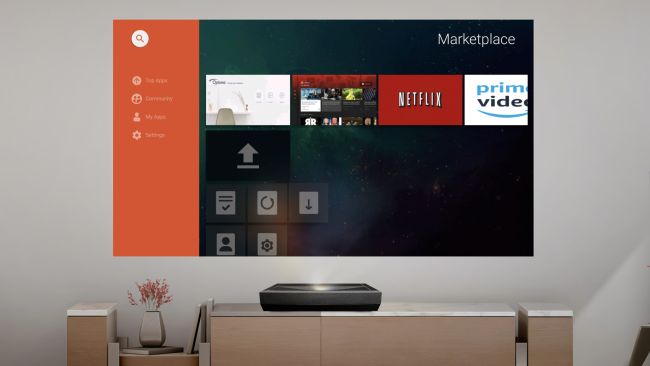
Colour, tint, colour temperature & sharpness
Tweaking for colour and tint is best done by prioritising skin tones; it shouldn't be hard to find a sequence that features close-ups of several regular-looking humans (avoid alien life-forms or over-broiled celebrities).
Just button the colour slider until they wait completely normal. This is subjective, only don't be tempted to over-saturate; there will be a perfectly natural point somewhere between pale and ill-looking, and downright orange. Warm, rosy colours accept an instant appeal, but this tin grate after a while, so go slightly paler than your eyes initially prefer.
It's all pretty intuitive, but information technology's wise to be slightly conservative.
Adjusting sharpness is another balancing act betwixt ultimate Full HD (or perhaps fifty-fifty Ultra Hard disk drive 4K) detail and the integrity of edges. Push sharpness likewise high and you'll see 'jaggies', poorly divers lines that appear stepped. Easily seen in skyscrapers and other buildings with make clean lines, this is often a outcome of upscaling (or lack of). Push button the sharpness down a few notches and jaggies will become less obvious.
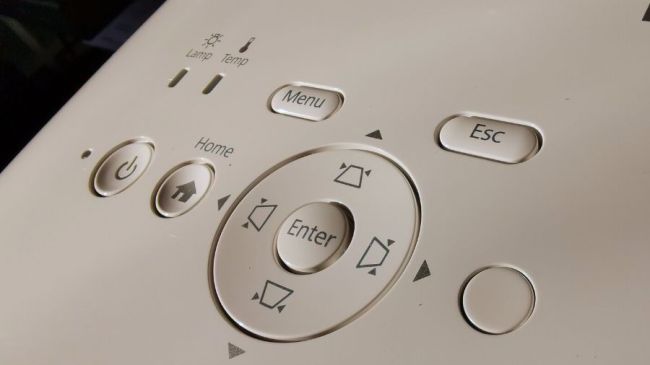
Movie processing
In order to overcome some of the limitations of project applied science, engineers have come up with various algorithms and workarounds.
Most of them have obvious, hyped-upward names, such as Dynamic Black, Super Resolution or Vivid Colour. However, the virtually mutual – and the most controversial – on reasonably high-finish projectors is frame interpolation, which seeks to rid video of judder and motion blur.
You'll notice judder most obviously when the photographic camera pans slowly from left to right, especially in Blu-ray discs. Frame interpolation tech works by intelligently inserting calculated frames of video into the onscreen activeness to make films appear more fluid, and easier to watch. It lends a video-like smoothness to Blu-ray discs – essentially creating a higher frame rate – that'south initially very highly-seasoned, although it can introduce some nasty artefacts.
If frame interpolation is used on its highest setting, y'all may run into flicker and 'rips' around whatever element of the flick that moves quickly (such as around actors' heads or limbs), so it'southward normally best experimented with on a mid-forcefulness setting. Having said that, some people absolutely detest even cleanly performed frame interpolation.
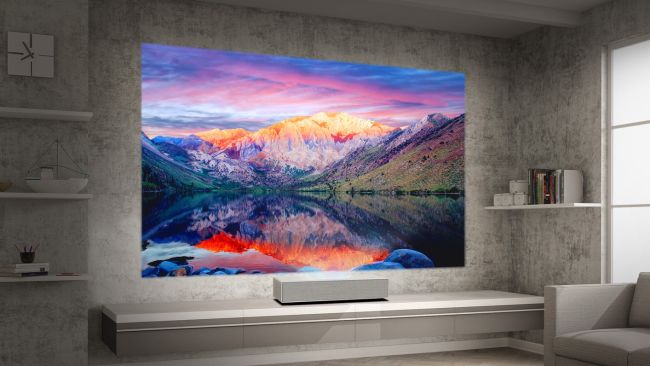
Ins and outs
Information technology goes without saying that it's always all-time to stick to HDMI connections wherever possible.
Don't make the mistake of spending big on short-length HDMI cables, since HDMI cables either work or they don't – think of them like a USB cable.
However, you may require an extra-long HDMI cable to reach from your source to the projector, which will be expensive, and less reliable the longer it is.
Merely be sure to avoid using legacy connections similar Scart and composite video, neither of which tin handle high-definition or whatsoever kind of upscaled video. When blown upwardly to the size of a projector screen, the results volition look soft, noisy and all-round unpleasant.
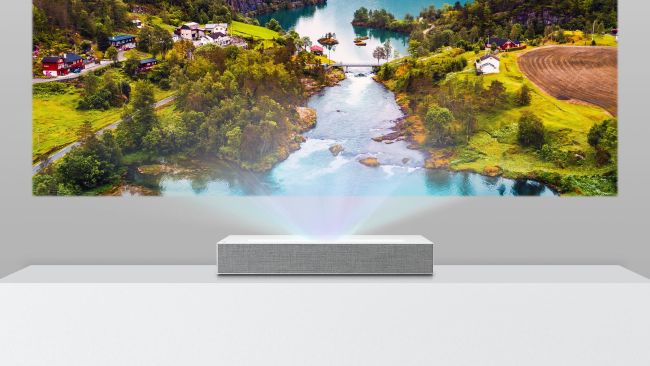
Screen or white wall?
If you want ultimate detail, exacting colours, decent contrast and the ability to utilise your projector during the day, a projector screen is essential. However, it's best to be honest virtually this one.
Aficionados volition ever have a screen – and TechRadar would never review a projector without one – but it is possible to use a white wall.
Every bit well as non having to invest in a projector screen, non having a specific screen to aim and fire at means you can create as big an image as the projector – and the size of your living infinite – allows. The whiter and flatter the wall, the better (any blemishes on the wall will both exist lit-up, and cast shadows, which can look awful), though do expect to lose significant detail, as well as some brightness.
Which screen should yous go for? The choice is largely nearly money, with a stock-still screen the cheapest selection, and a retractable screen peradventure the most aesthetic.
It's possible to get a motorised cantilever projector screen that rises or lowers from a housing placed on the floor or attached to the ceiling, although a manual pull-down or pull-upwards screen works but as well. Ever get for a tensioned screen, which will give the paradigm a completely flat sail.
And, no, a white sheet really won't piece of work also.
Projector screens always have a black edge all around, which helps requite your brain the illusion of improve contrast. Comprehend this – it works – and is some other reason why projecting onto a wall is underwhelming. All the same, most important is how much light the screen reflects, which is chosen proceeds – and every unmarried projector screen ever made beats a white wall on this measurement.
With a screen in place and your projector calibrated to your carefully considered preferences – whatever they are – your home cinema will truly requite y'all the bigger film.
- Best portable projectors: top mini projectors for piece of work and play
- Best business projectors: superlative projectors for dwelling house and travel
Source: https://www.techradar.com/how-to/how-to-set-up-your-projector-for-the-perfect-picture
Posted by: aquinowassent.blogspot.com


0 Response to "Can I Use Test Patern From Youtube To Calibrate Projector"
Post a Comment